Jacob Ochtervelt
Rotterdam 1634 - Amsterdam 1682
An Interior with a young Woman reading a Letter.
Oil on Canvas, 91 x 78.5 cm
ENQUIRIES
Provenance
Sale, Amsterdam (van der Schley, Yver), 10 June, 1789, no. 6;
Price Sale, Christie’s, London, 6 May 1893, no. 106;
Mrs Young, England (according to Kuretsky, inscribed on a no longer extant label on the verso);
Baron Königswarter (1837-1893), Vienna;
His Sale, Berlin (Schwarz and Schulte et. al), 20 November 1906, lot. 66;
Dr. Paul von Schwabach, Berlin, 1915;
With Nathan and Benjamin Katz, Dieren, 1940;
Munich Central Art Collecting Point (Mü. No. 2447);
Acquired for Adolf Hitler’s museum in Linz, inv. no. 1317;
Restituted to the Katz family, The Netherlands, after 1945;
Private collection ten Bos, Almelo, The Netherlands;
Private Collection, Cologne, 1954-2021.
Katalog der Sammlung Baron Königswarter in Wien, II, Gemälde Alter Meister (for Königswarter Sale), Berlin, 1906, p. 49, no. 66;
A. von Wurzbach, Niederländisches Künstler-lexikon, Vienna & Leipzig, 1910, vol. 2, p. 249;
E. Plietzsch, “Ausstellung von Werken alter Kunst aus Berliner Privatbesitz”, Cicerone, vol. 7, 1915: 202-4, pl. 2;
Zeitbilder, no. 41, 23 May, 1915, p. 3;
W. R. Valentiner, “Jacob Ochtervelt”, Art in America, vol. 12, 1924, p. 274
Cicerone 17, 1925: 863, nr. 288;
Gerson, Thieme-Becker, vol. 25, 1931, p. 556
E. Plietzsch, “Jacob Ochtervelt”, Pantheon, vol. 20, 1937, pp. 364, 372, fn. 1
E. Plietzsch, Holländisches und flämische Maler des XVII. Jahrhunderts, Leipzig, 1960, p. 66;
S. D. Kuretsky, The Paintings of Jacob Ochtervelt (1634-1682), Oxford, 1979, pp. 85-6, no. 77, reproduced Fig. 89;
P. Sutton, et. al, Love Letters: Dutch Genre Paintings in the Age of Vermeer, exh. cat., Bruce Museum of Arts and Science, Greenwich, Connecticut, and National Gallery of Ireland, Dublin, 2003, illus. p. 194.
Birgit Schwarz, Hitlers Museum, 2004, p. 108, no. III/27, illustrated p. 227.
Exhibition
Duchesse de Berry, London, 1834, no. 28;
Galerie Paul Cassirer, Berlin, Ausstellung von Werken Alter Kunst aus Berliner Privatbesitz, May-June 1915, no. 90;
Akademie der Künste, Berlin, Ausstellung des Kaiser-Friedrich-Museums-Verein, July-August 1925, cat. no. 288.
Additionnal Information
Close contemporary of Vermeer, Ter Borch, Metsu, de Hooch and van Mieris, Jacob Ochtervelt was the leading Rotterdam specialist in aristocratic genre paintings, during the 1660’s and early 1670’s.
Our painting, The Letter Reader, shows an action quite common at the time, with a hidden message to be found in the careful study of the painting.
Some of the details are recurrent in Ochtervelt’s works of the same period. The young lady’s costume can be found in at least two other paintings such as the Music Lesson in the City Museum and Art Gallery of Birmingham (England). The silver pitcher and basin are repeated in four other paintings (lady trimming her fingernails with Maid, in the National Gallery of London). It was demonstrated that this motif originated in 17th Century Emblems and was used as a symbol of both physical and spiritual purity which associated with a love letter, reminded women of their moral duty.
In this Letter Reader, a painting is hanging on the back wall depicting a reclining Venus alluding that the letter is a love letter. Thus, in this context, the objects are probably referring to the Chastity of the woman receiving the love letter.
But it is also the evocation of the intimacy of a boudoir and the relationship between mistress and servant: as the woman reads aloud from the letter, her maid pauses to listen, setting the silver accessories on the table.
Painted ca. 1671 and 1673 in Rotterdam, this painting is characteristic of Ochtervelt’s later work, more quiet and more decorous in composition and mood, with restrained politeness and a growing emphasis on elegance and social refinement.
Trained with Nicolaes Berchem, at the same time as Pieter de Hooch, Jacob Ochtervelt was firstly influenced by the Italianate influences brought probably by his master and his style and subjects were closer to Jan Baptiste Weenix or Ludolf de Jongh. Since the beginning he always had an inclination towards painting of figures. Later though, his style evolved and was more influenced by the Leiden and Delft School represented respectively by Gerrit Dou or Frans van Mieris and Vermeer or Pieter de Hooch for the Delft School. His move to Amsterdam in 1674 reflects also his evolution towards a meticulous realism in the depiction of objects and material texture, combined with a rather abstract, classicizing treatment of figures.
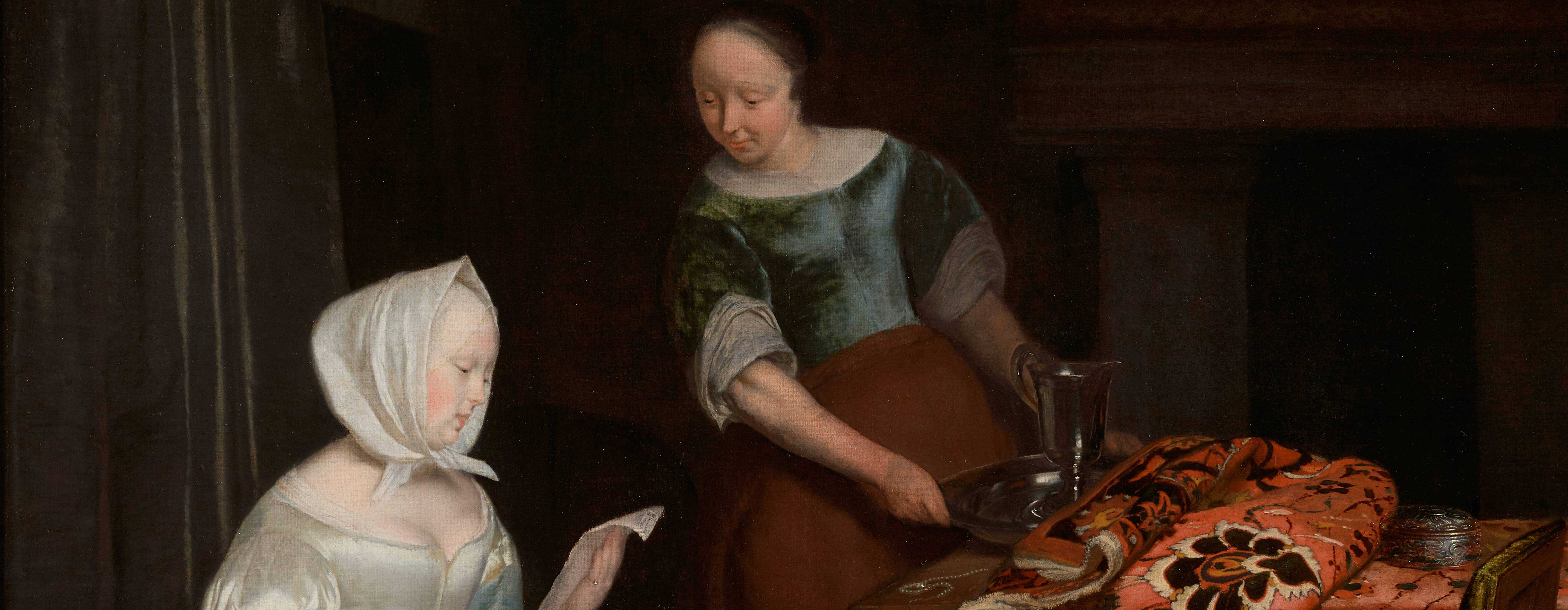
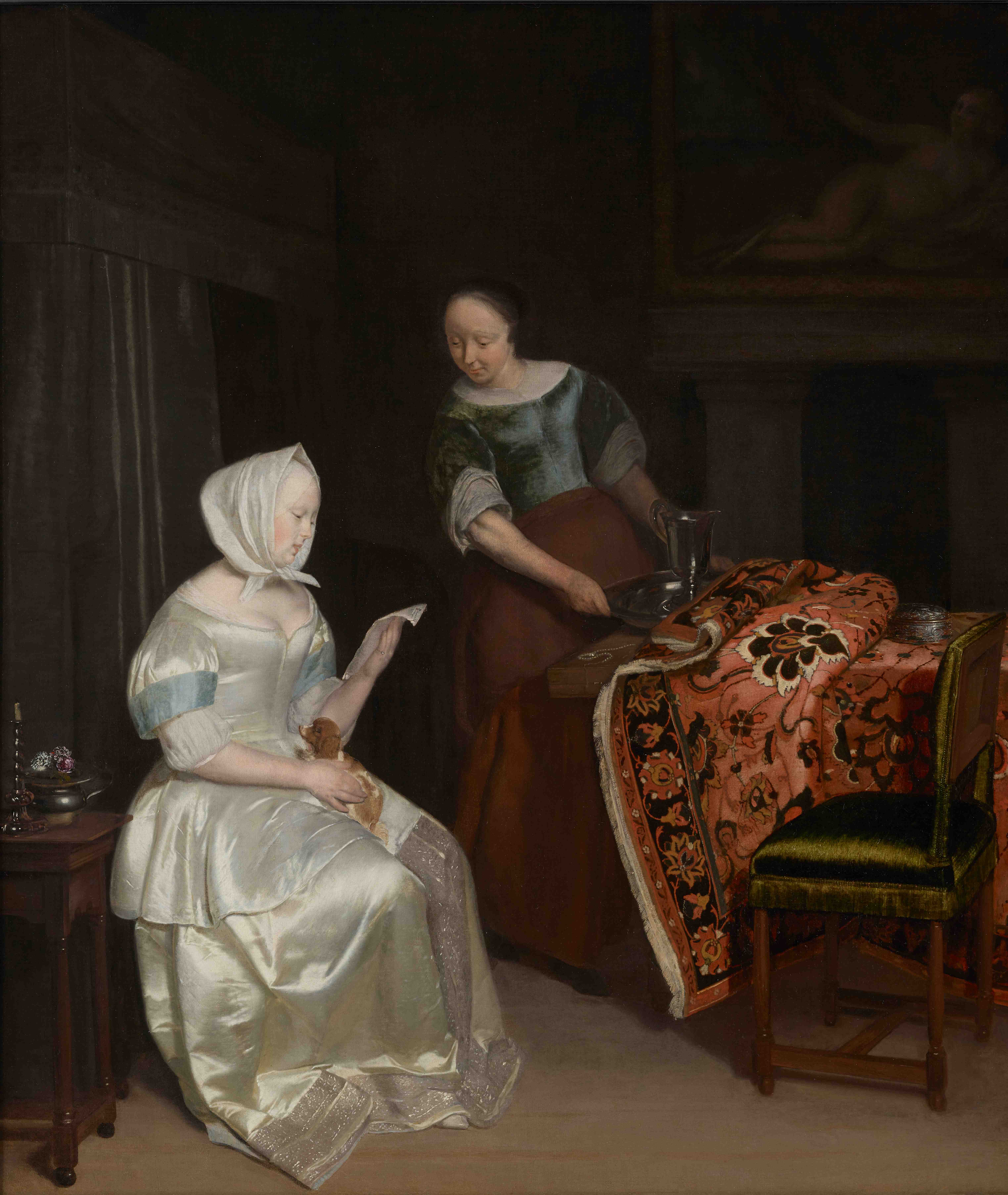
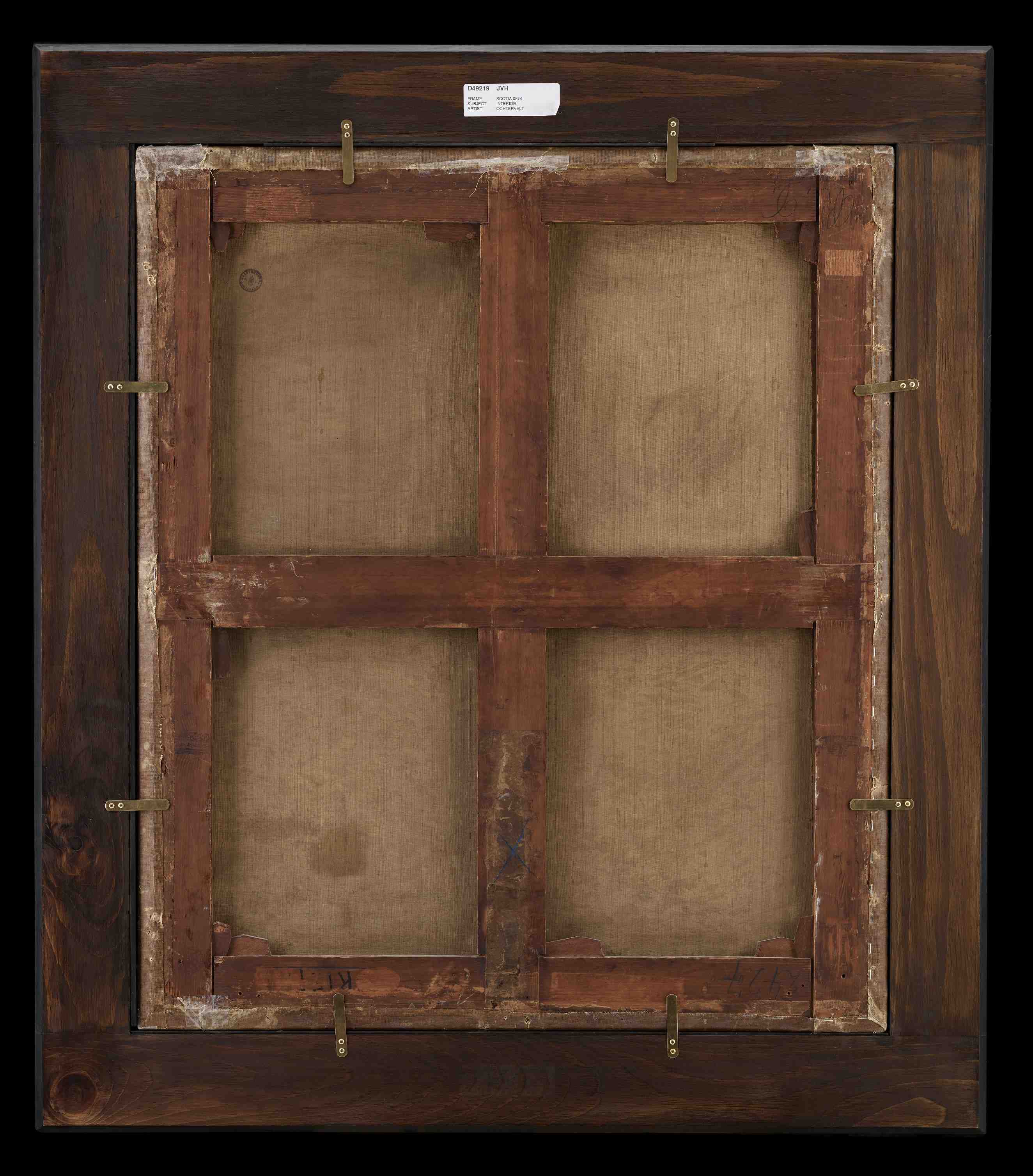
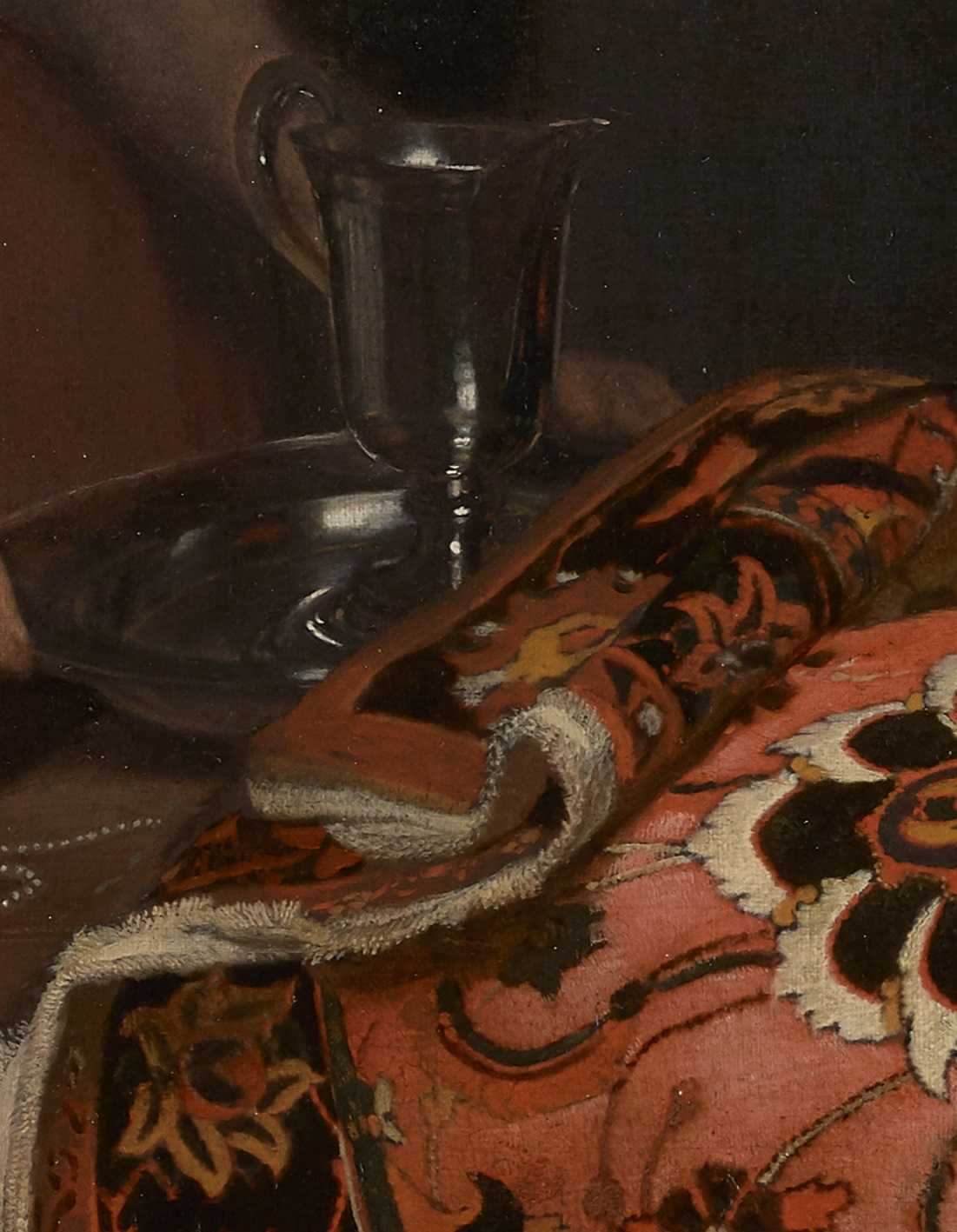
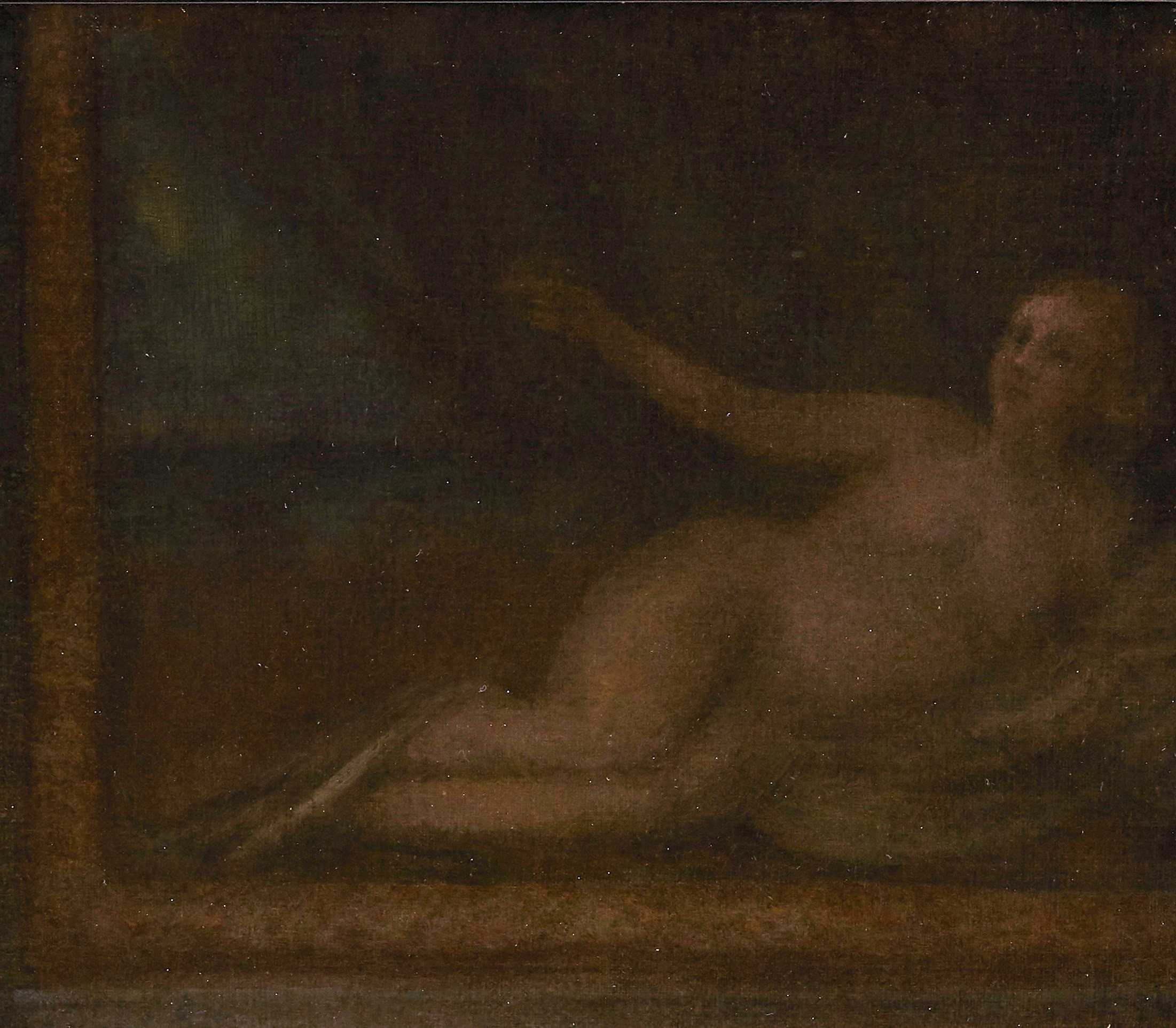
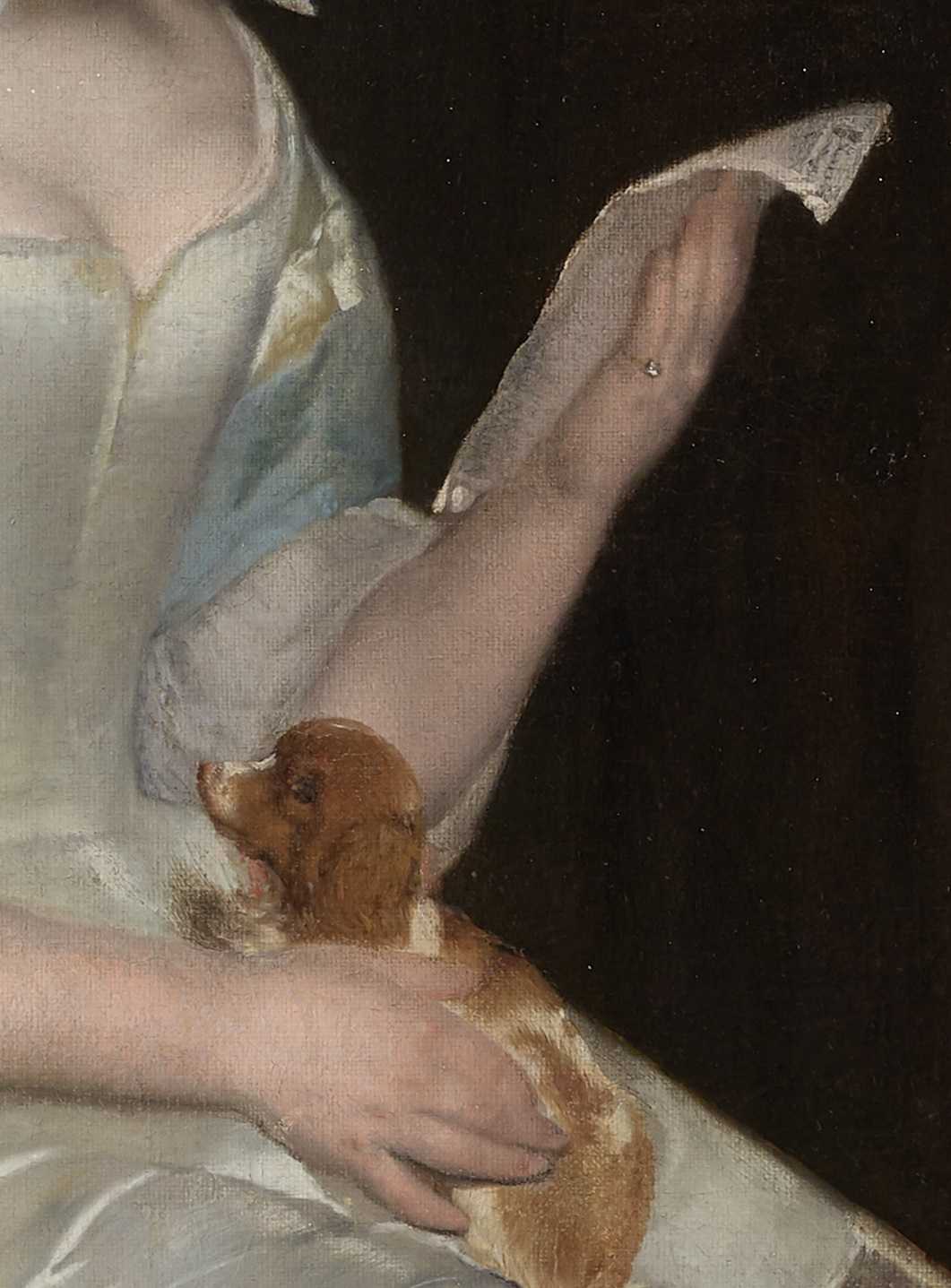
 Facebook
Facebook
 Twitter
Twitter


 Gmail
Gmail


